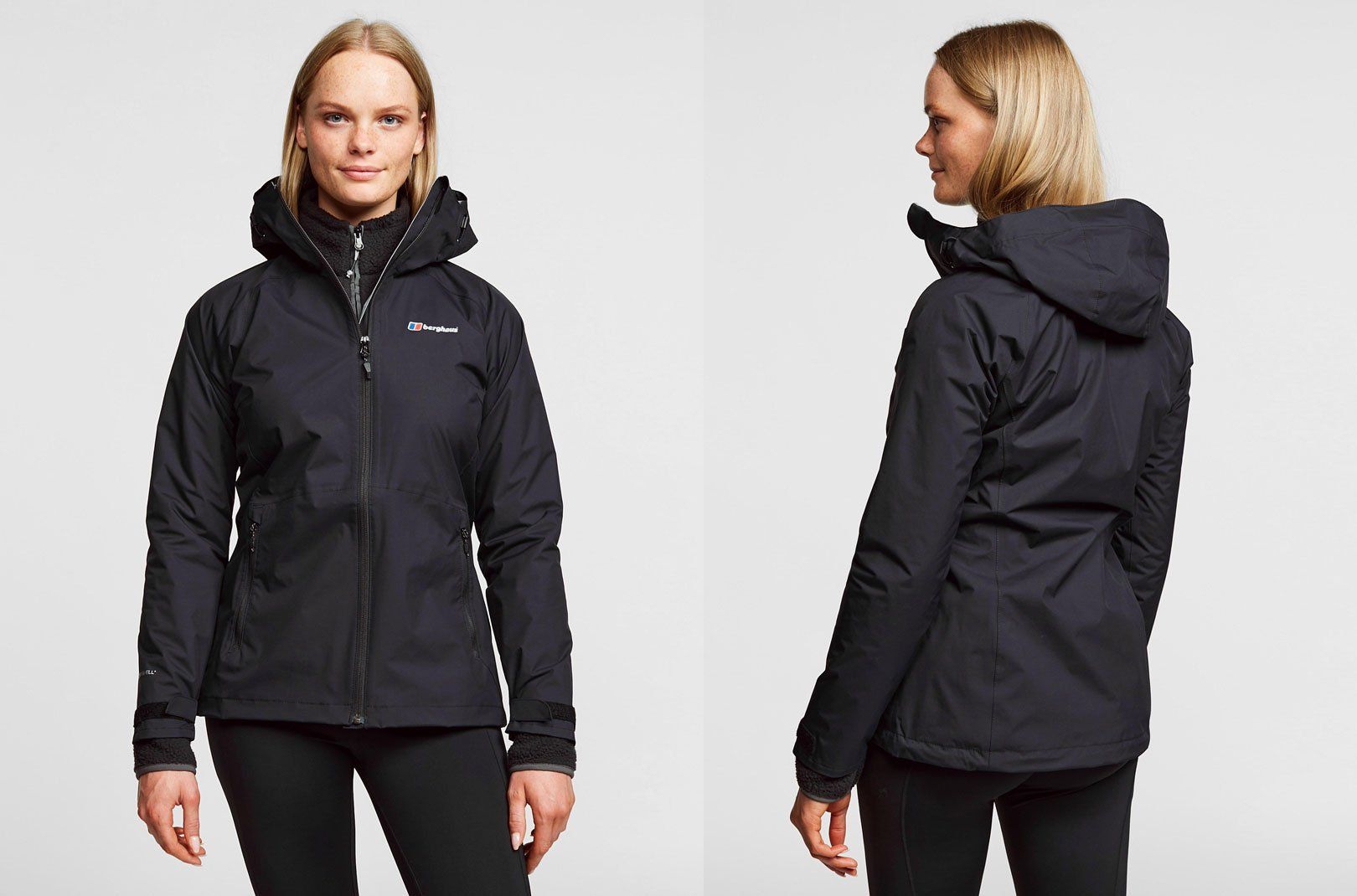At Millets we’ve been getting people outdoors since 1893 and so we know the importance of having the right gear, especially when it comes to the unpredictable British weather. Now you don’t need to spend a small fortune when kitting yourself and the family out for an adventure, but there are some suitable staples we suggest. And first things first are your layers.
If you’re a beginner in the field, it may feel daunting to know what to wear to get active in the outdoors. With a wide variety of jackets, baselayers and fleeces, it can be difficult to know where to start.
First of all, it’s important to start by saying that layers are essential because they allow you to regulate your own temperature. Layers mean you can add and remove warmth with ease, cooling you down or heating you up when you need. They all each play a special part with their technical features to keep you protected, too.
The layering system is made up of 3 parts. From the baselayer that sits next to the skin, the midlayer that traps heat in and the final outer layer that encapsulates it all, each garment has its own important and unique job.

Baselayer
Although you may think a baselayer's priority is to provide insulation, the main purpose of this layer is to wick away sweat from your body as it sits directly next to the skin. Even in cold conditions, it’s important to remove perspiration from your body to avoid rapid heat loss.
There are both summer and winter options available, with winter baselayers also offering insulation. Winter options are often referred to as thermals.
Baselayers often fit into two categories for material: synthetic and wool. Cotton should never be in the picture. A t-shirt can often be mistaken for a good idea, but as a baselayer, it won’t remove sweat which will result in heat loss due to perspiration.
What’s the difference between wool and synthetic? Synthetic base layers are high-wicking, fast-drying, lightweight and durable. Most of them are made from polyester, so they are much cheaper to make and therefore cheaper to purchase. For these reasons, most people do opt for synthetic over merino wool.
However, merino wool is a naturally breathable material that is insulating as well as odour resistant and fire retardant. Its unique properties work to adapt to your environment and body temperature, keeping you cool and comfortable no matter what your chosen adventure. With this option comes a bigger price tag, but if natural fibres are your thing, this is the one for you.

Midlayer
Although this may be obvious, the midlayer is the layer that goes in-between your baselayer and waterproof coat. Its main purpose is insulation – to keep you warm.
Your midlayer must also be highly breathable and fast drying in order to transmit perspiration from your baselayer. This is important so that your midlayer doesn’t end up wet, which is why a standard hoodie or jumper won’t do the same job. Other choices are also much more lightweight and more compressible, ideal when wearing multiple layers.
Fleeces
First of all, we have fleeces. They are probably the most popular choice amongst outdoor enthusiasts; not only do they keep you warm, they also come at a good price.
Available in a range of thicknesses, hikers can pick their preferred weight depending on their location and foreseeable weather conditions. Fleeces are lightweight, quick drying and breathable and work to trap heat in with their fleece fibres. As well, they can easily be stored in your bag if you get too hot.
Merino Wool
Secondly, you can pick another merino wool layer. Not only do they make great base layers, thicker merino wool fibres can make the perfect mid layer. As discussed above, this material is naturally breathable and insulative, which is everything you need from a midlayer.
Softshell and Insulated Jackets
Finally, we also have the choice between softshell jackets and insulated jackets. Although the term jacket would lead you to believe that this is an outerlayer, they won’t protect you from heavy rainfall. Therefore, they would need to be used under your waterproof as they won’t provide the full protection that you need in the outdoors – especially in the UK.
Although many of them can be used alone in good weather conditions, it’s always a good idea to pack a waterproof as well.

Outer Layer
To complete the 3 layer system, we have the waterproof jacket.The one that protects you from the rain and wind.
Although many technical coats are treated with DWR, they won’t offer full protection when the rain comes. This is why the outer layer should always be 100% waterproof.
Customers will find a different range of waterproof jackets, and different elements that make them more protective. You can find a full guide to choosing the right waterproof jacket for your adventures here.
As well as waterproofing another important function to help combat the elements is windproofing. When you consider a mere 10km/h wind makes 5°C feel more like -2°C you will begin to appreciate its importance. Luckily there are a lot of waterproof jackets in our range that also provide 100% windproofing. This greatly reduces the effects of wind-chill and the risk of cooling related issues like hypothermia.
The final benefit a good outer layer provides is breathability. This is how waterproof fabrics allow perspiration to escape. It is this ability that sets a quality outer layer apart from a basic waterproof jacket. It’s really quite surprising how wet you can become from perspiration when active in a waterproof jacket. This moisture causes significant discomfort and more seriously rapid cooling.

So, there you have it, your 3 layering system explained as simply as we can. Still not sure coat to go with? Check out our extensive advice guide on jackets here and be a pro in no time.

